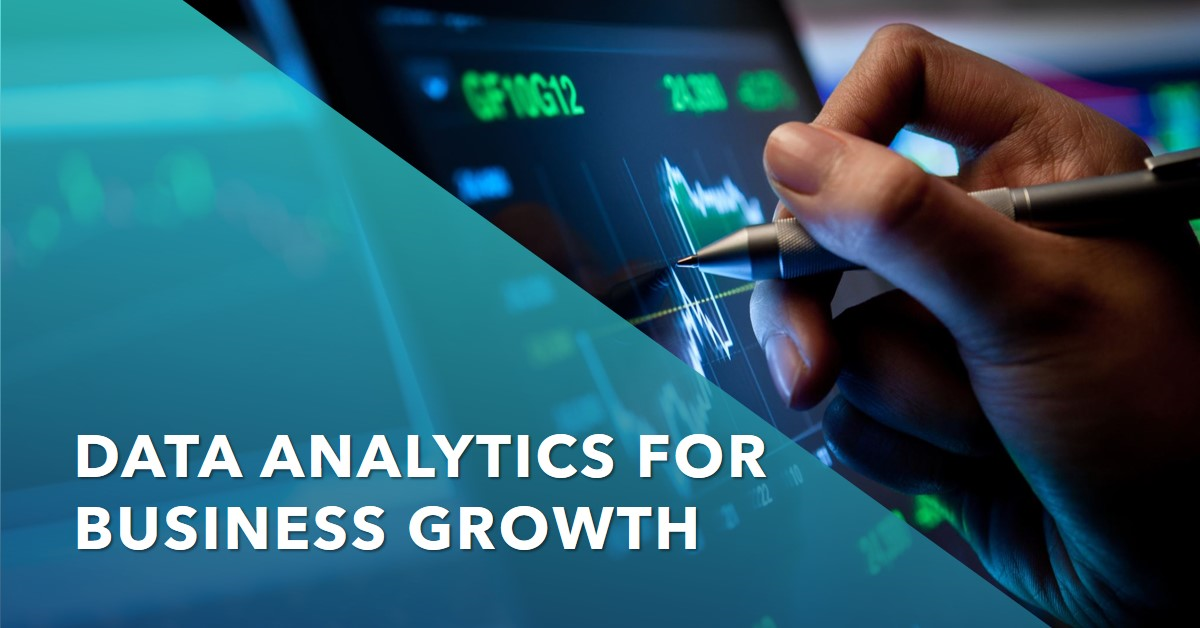Data Analytics: The Key to Business Growth
Introduction
In the digital age, data is often referred to as the “new oil.” Businesses are generating massive amounts of data every day, and harnessing this data is crucial for driving growth and gaining a competitive edge. Data analytics involves examining this data to uncover patterns, trends, and insights that can inform business decisions. At i4 Tech Integrated Services, we help businesses leverage data analytics to optimize operations, enhance customer experiences, and foster innovation. Data-driven decision-making is no longer a luxury—it’s a necessity for companies that want to thrive in a rapidly evolving marketplace.
What is Data Analytics?
Data analytics is the process of inspecting, cleaning, transforming, and modeling data to discover useful information, draw conclusions, and support decision-making. It involves the use of statistical, mathematical, and computational techniques to analyze data, with the goal of extracting valuable insights. Data analytics can be classified into four major types:
- Descriptive Analytics – Focuses on understanding past performance and identifying patterns in historical data.
- Diagnostic Analytics – Seeks to understand the reasons behind past outcomes by analyzing the relationships and factors that contributed to those results.
- Predictive Analytics – Uses data, statistical algorithms, and machine learning techniques to predict future trends or outcomes.
- Prescriptive Analytics – Provides recommendations for actions based on predictive models to optimize decision-making.
How Data Analytics Drives Business Growth
- Improved Decision-Making One of the most significant benefits of data analytics is its ability to support better, more informed decision-making. By analyzing historical data, businesses can uncover insights that guide strategic planning and day-to-day decisions. Key areas where data analytics supports decision-making include:
- Market Trends – Identifying emerging trends and changes in customer preferences allows businesses to adjust their offerings and stay ahead of the competition.
- Performance Metrics – Data analytics provides real-time insights into business performance, enabling managers to make timely decisions to improve efficiency and productivity.
- Risk Management – By analyzing data related to past risks and outcomes, businesses can predict and mitigate potential risks, protecting their assets and minimizing financial losses.
- Enhanced Customer Experience Understanding customer behavior is essential for providing personalized, high-quality service. Data analytics allows businesses to:
- Segment Customers – By analyzing customer data, businesses can segment their audience based on demographics, purchasing behavior, and preferences, allowing for targeted marketing strategies.
- Predict Customer Needs – Predictive analytics helps anticipate customer needs and preferences, enabling businesses to offer relevant products and services at the right time.
- Improve Customer Support – By analyzing customer service interactions and feedback, businesses can identify areas for improvement and optimize their support processes, leading to higher customer satisfaction.
- Operational Efficiency Data analytics helps businesses streamline operations and reduce costs by identifying inefficiencies in their processes. Through the analysis of workflow data, businesses can:
- Optimize Resource Allocation – Data analytics provides insights into where resources (such as manpower, materials, or equipment) are being underutilized or overused, allowing for better allocation and cost savings.
- Automate Processes – By identifying repetitive tasks that can be automated, businesses can reduce manual labor and increase overall productivity.
- Monitor Supply Chain Performance – Analytics helps businesses track inventory, supplier performance, and delivery timelines, ensuring that the supply chain operates smoothly and cost-effectively.
- Revenue Growth Data analytics enables businesses to identify new opportunities for revenue generation. By analyzing customer behavior, market conditions, and sales data, businesses can:
- Identify Upselling and Cross-Selling Opportunities – By understanding purchasing patterns, businesses can offer additional products or services to existing customers, increasing sales.
- Optimize Pricing Strategies – Data analytics can reveal how price changes affect demand and customer behavior, helping businesses adjust their pricing models for maximum profitability.
- Target New Markets – Analyzing market data helps identify new geographic regions or customer segments that present opportunities for expansion.
- Innovation and Product Development Data analytics is a powerful tool for driving innovation and developing new products or services. By analyzing customer feedback, market trends, and competitor performance, businesses can:
- Identify Market Gaps – Data analytics helps uncover unmet needs in the market, allowing businesses to develop products that meet customer demands.
- Enhance Product Features – By analyzing product usage data and customer feedback, businesses can identify opportunities to improve existing products and increase customer satisfaction.
- Accelerate Time to Market – Analytics-driven insights streamline the product development process, allowing businesses to launch new products faster and with greater success.
- Competitive Advantage Businesses that use data analytics gain a competitive edge by making smarter decisions, optimizing processes, and staying ahead of market trends. Key ways data analytics provides a competitive advantage include:
- Market Intelligence – By analyzing competitors’ data and market trends, businesses can adapt their strategies and remain competitive in their industry.
- Faster Decision-Making – Real-time analytics allow businesses to respond quickly to changes in the market or customer behavior, outpacing competitors who rely on traditional decision-making methods.
- Agility and Adaptability – With access to up-to-date data and insights, businesses can quickly pivot and adapt to new opportunities or challenges.
Implementing Data Analytics in Your Business
To leverage data analytics effectively, businesses must first build a strong data infrastructure. This includes:
- Data Collection – Collecting data from various sources, including customer interactions, sales transactions, website analytics, and social media.
- Data Integration – Integrating data from different departments or systems into a centralized platform to ensure a holistic view of the business.
- Data Analysis Tools – Using advanced analytics tools such as machine learning algorithms, business intelligence platforms, and data visualization tools to extract valuable insights from the data.
- Data Governance – Implementing data governance practices to ensure data quality, security, and compliance with regulations.
At i4 Tech Integrated Services, we offer businesses the tools, expertise, and guidance needed to implement effective data analytics strategies. Whether you’re looking to optimize your operations, enhance customer experience, or drive innovation, we can help you turn data into actionable insights that fuel growth.
Conclusion
Data analytics is not just a trend—it is a key driver of business growth. By analyzing data, businesses can make smarter decisions, enhance customer experiences, improve operational efficiency, and uncover new revenue opportunities. As the business landscape becomes increasingly data-driven, leveraging data analytics will be crucial to staying competitive and achieving long-term success. At i4 Tech Integrated Services, we empower businesses to harness the power of data and unlock their full growth potential.


